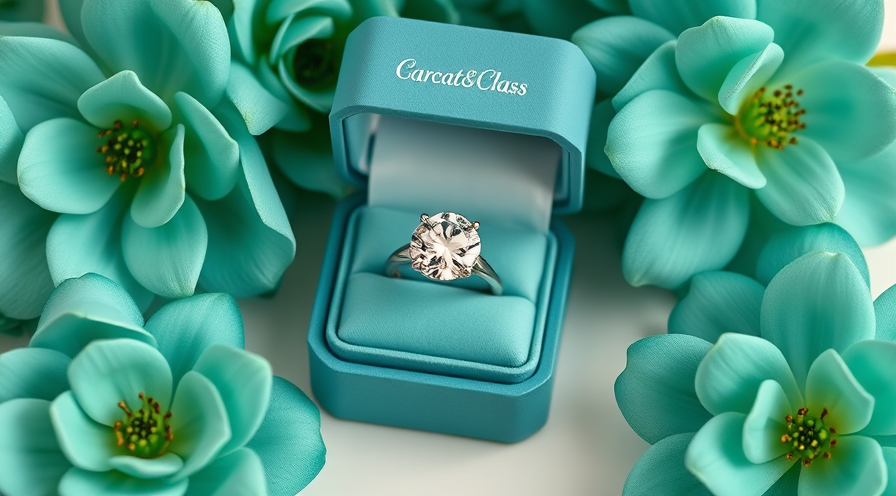
Why Moissanite is the Eco-Friendly Choice in 2025
Share

Introduction
Overview of Moissanite popularity
In 2025, moissanite has emerged as a popular choice for consumers seeking both luxury and sustainability in their jewelry purchases. Over the past few years, the gem has gained significant traction as an alternative to traditional diamonds, particularly among environmentally-conscious individuals who desire ethical choices without compromising on quality or beauty.
Importance of eco-friendly choices
The increasing awareness of environmental issues makes eco-friendly choices more crucial than ever. As consumers become more informed about the impact of their purchasing decisions, they are embracing products that minimize harm to the planet. Moissanite, with its significantly lower carbon footprint compared to diamonds, exemplifies this shift towards sustainable luxury in the jewelry industry.
What is Moissanite?
Origin and composition of Moissanite
Moissanite is a rare mineral discovered by French scientist Henri Moissan in 1893. Initially found in a meteor crater, moissanite is composed of silicon carbide and is almost exclusively manufactured in labs today. This production process allows precise control over quality while ensuring an ethical and sustainable origin.
Comparison with traditional diamonds
While visually similar to diamonds, moissanite differs significantly in composition. It is renowned for its remarkable brilliance and hardness, scoring 9.25 on the Mohs scale compared to a diamond's 10. Moissanite’s refractive index is higher than that of diamonds, resulting in a more intense sparkle. Its ethical production and visually stunning characteristics make it increasingly favorable among eco-conscious jewelry buyers.
Growth in the jewelry market
The jewelry market has seen rapid growth in moissanite sales, with an increasing number of artisans and major retailers expanding their offerings to include moissanite. As demand grows, the gemstone continues to establish itself as a mainstream choice for those seeking quality without the environmental and ethical costs associated with natural diamonds.
Environmental Impact
Sustainable sourcing benefits
Moissanite offers significant advantages in sustainable sourcing. Unlike diamonds, which often require extensive mining operations, moissanite is typically created in laboratory settings. This approach not only negates the need for destructive mining procedures but also allows for efficient use of resources and reduced environmental impact.
Minimal mining environmental damage
Mining for diamonds is notorious for its ecological harm, from habitat destruction to carbon emissions. Moissanite, being lab-grown, avoids such detrimental practices altogether. The controlled environment of its production facilitates minimal environmental interference, making it an ideal choice for eco-conscious consumers.
Energy-efficient production methods
The process of synthesizing moissanite is inherently more energy-efficient than mining natural diamonds. Advances in technology have further minimized energy consumption, allowing manufacturers to create high-quality stones using less power, which aligns seamlessly with modern eco-friendly production goals.
Ethical Considerations
Avoidance of conflict zones
One of the most compelling ethical advantages of moissanite is its avoidance of conflict zones. The diamond industry has long been associated with conflict and human rights abuses. In stark contrast, moissanite’s lab creation ensures a transparent and conflict-free supply chain, appealing to those who prioritize corporate responsibility and human rights.
Supporting transparent supply chains
Moissanite supports transparent and traceable supply chains, which are becoming vital to responsible consumerism. With its origins rooted in ethical practices, buyers can be assured that their moissanite jewelry is free from the human and ethical violations commonly associated with diamond mining.
Economic Advantages
Cost-effectiveness compared to diamonds
Moissanite is not only aesthetically pleasing and ethical but also economically advantageous. It typically costs a fraction of the price of a comparable diamond, making it accessible for a broader range of consumers. This affordability does not compromise quality, making it an attractive choice for those seeking value and opulence.
Longevity and durability benefits
Durability is a critical factor when selecting a gemstone for fine jewelry. Moissanite excels in this regard, offering substantial longevity with resistance to scratching and chipping. This resilience ensures that jewelry retains its brilliance and beauty over time, making moissanite a wise investment for lasting elegance.
Conclusion
Summary of eco-friendly advantages
In summary, moissanite stands as a beacon of eco-friendly innovation in 2025. Its sustainable production, ethical origins, and transparency offer a responsible alternative to conventional gems, without sacrificing beauty or quality. As the world shifts towards greener practices, moissanite offers an ideal solution to sustainable luxury.
Encouraging sustainable jewelry choices
As the jewelry industry evolves, embracing sustainable choices like moissanite is imperative. Consumers are encouraged to choose moissanite to contribute to a more ethical and environmentally-friendly future. By opting for moissanite, they not only adorn themselves with exquisite jewelry but also participate in a broader movement towards a sustainable world.

